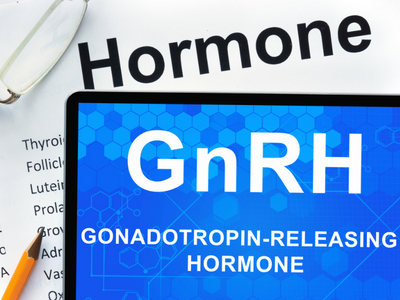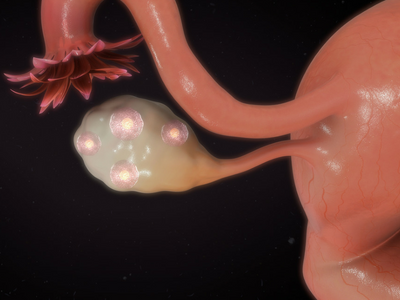Exercising everyday? Crushing your macros? Getting compliments on how “great” you look? You are the picture of health, and yet you haven’t had your period in nearly a year. How could this be? You’re doing everything right.
You clearly are healthy. Or are you?
Too Much of a Good Thing
 About 3 to 5 percent of all women suffer from amenorrhea. Amenorrhea is the loss of menstrual cycle for more than three months (or an irregular cycle for six months) [1,2]. The most obvious symptom is lack of a period. There are a few different causes of amenorrhea. for exercising women the most common reason is functional hypothalamic amenorrhea (FHA).
About 3 to 5 percent of all women suffer from amenorrhea. Amenorrhea is the loss of menstrual cycle for more than three months (or an irregular cycle for six months) [1,2]. The most obvious symptom is lack of a period. There are a few different causes of amenorrhea. for exercising women the most common reason is functional hypothalamic amenorrhea (FHA).
Half of exercising women have been found to have abnormal periods (compared to 4.2 percent in sedentary women) and 33.7 percent of exercising women were amenorrheic [3].
If Exercise Is Healthy Then What’s Going On?
Causes of functional hypothalamic amenorrhea include stress (psychological and physiological), dieting, vigorous exercise or chronic illness. There is a lot of evidence that show that exercising women with chronic energy deficiency end up with amenorrhea. This chronic energy deficiency can be from a lot of exercise, not enough calories or a combination of both from either exercise, or not enough food intake.
In fact, menstrual dysfunction in young exercising women is so common along with two other symptoms has a name “the female athlete triad” (more on that in a bit).
Technically there are three subtypes of FHA: weight loss-related, stress-related, and exercise-related amenorrhea. In many cases all three (weight loss, stress and exercise) combine to cause FHA, though usually all three are present in most women experiencing FHA.
 Recent research suggest psychological stress, physiological stress (including low body fat) and genetics also play a role [2,4]. The key driver is caloric deficit where energy intake is inadequate to compensate for energy expenditure, however you might get there [5].
Recent research suggest psychological stress, physiological stress (including low body fat) and genetics also play a role [2,4]. The key driver is caloric deficit where energy intake is inadequate to compensate for energy expenditure, however you might get there [5].
Biologically, it is very important that women (human females) don’t get pregnant if there isn’t enough food (a.k.a. calories) available to them. This is because humans have a hemochorial placenta, which means the fetus has control over the mother’s hormones — not the mother. That’s right: the fetus is driving the hormonal bus, and all it cares about is its survival. What this means for mothers-to-be is that, before getting pregnant, it’s important that they are in a situation where they can survive this pregnancy.
By the way, that fetal control is the reason why you get a period at all. Most other mammals reabsorb the endometrium, but not humans. We naturally get rid of it because any implanted fetuses that didn’t survive would still have some control over the maternal circulation [6].
What Is FHA, Exactly?
FHA is the loss of menstrual cycle due to a specific hormonal disruption. Did you know that the hormones that regulate ovulation are incredibly sensitive to energy balance — short term and even long term, through how much body fat do you have?
A Closer Look at Hormones
In both men and women, the hypothalamic-pituitary-gonadal (HPG) axis is the cooperative functioning of three endocrine glands. First, the hypothalamus releases gonadotropin releasing hormone (GnRH). This tells the pituitary (anterior pituitary gland) to release luteinizing hormone (LH) and follicular stimulating hormone (FSH). LH and FSH then act on the gonads (a.k.a. testes or ovaries).
In women, this triggers the production of estrogen (specifically E2 – estradiol) and progesterone — which we need to release a mature egg (ovulation) and to support a pregnancy. The whole thing is called the “female reproductive axis” or hypothalamic-pituitary-ovarian axis (HPO).
 For proper regulation of the HPO axis, it’s not enough that GnRH is made and secreted. The rate at which GnRH is made and secreted is very important — this is called GnRH pulsing. The hypothalamus makes GnRH at a very specific rhythm that then goes on to tell your pituitary gland to make (or not make) LH or FSH.
For proper regulation of the HPO axis, it’s not enough that GnRH is made and secreted. The rate at which GnRH is made and secreted is very important — this is called GnRH pulsing. The hypothalamus makes GnRH at a very specific rhythm that then goes on to tell your pituitary gland to make (or not make) LH or FSH.
If everything is working right, these pulses of GnRH (how often and how big) control the different phases of your menstrual cycle. Low-frequency (<1 pulse every 2-3 hours) triggers FSH release, and high frequency trigger (>1 pulse per hour) LH release (also in pulses). The pulses of GnRH that triggers LH pulses are key for regular menstrual cycles [7].
When Things Don’t Go As They Should
GnRH pulses seem to be very sensitive to environmental factors, and can be thrown off by fasting or caloric deficits. A few things regulate normal GnRH pulses, with kisspeptin (no really that’s what it’s called) being the key regulator.
Kisspeptin, a protein-like molecule that neurons use to communicate with each other (and get important stuff done), stimulates GnRH production in both sexes, and we know that it’s very sensitive to leptin, insulin, and ghrelin — hormones that regulate and react to hunger and satiety. Interestingly, females mammals have more kisspeptin than males. More kisspeptin neurons may mean greater sensitivity to changes in energy balance.
Low leptin (which happens with lower body fat) means less GnRH altogether as leptin stimulates GnRH. Low body fat through low leptin levels contribute to causing FHA.
 What this means is that getting pregnant during times with limited foods was historically deadly for women. Interestingly humans are one a few mammals that cannot “pause” a pregnancy or terminate a pregnancy when there’s not enough food.
What this means is that getting pregnant during times with limited foods was historically deadly for women. Interestingly humans are one a few mammals that cannot “pause” a pregnancy or terminate a pregnancy when there’s not enough food.
So the key for women is not to get pregnant in times when food is lacking. This is achieved by not having a menstrual cycle so an egg isn’t around to get fertilized.
Health Implications of FHA
“Who cares? It’s kinda nice not having my period!”
The most obvious side effect is you’re not having your period and for most women this isn’t at all a problem — it’s kind of a benefit. Another pretty effect of amenorrhea is that if you’re not having a period, you’re not ovulating, so you’re not fertile and you can’t get pregnant. Again this might not be seen as a bad thing for some women.
However, besides reproductive health, other aspects of women’s health are compromised including the skeletal system, the cardiovascular system, and psychological well-being [2].
Skeletal (Bone) Health Considerations
If your reproductive health isn’t a concern for you, another negative consequence of functional amenorrhea is decreased bone mineral density that increases your risk of osteoporosis and risk of fractures if amenorrhea occurs on a relatively long term.
This loss of bone mineral density along with FHA and low energy availability (with or without an eating disorder) in female athletes is called “the female athlete triad” and has been studied since 1997.
Cardiovascular Health Considerations
Overall, estrogen (specifically estradiol) is cardioprotective, which is why pre-menopausal women have a lower risk of cardiovascular disease compared to men and postmenopausal women.
Lower levels of estrogen caused by FHA are linked to compromised vascular function and altered blood lipid profile [2], since coronary and peripheral blood vessels contain estrogen receptors that make these vessels responsive to estrogen and estrogen a key regulator in healthy vascular function.
 Women with FHA have a blood lipid profile that’s linked to higher risk of heart disease, including higher total cholesterol, LDL cholesterol, higher apolipoprotein B and higher triglycerides [2].
Women with FHA have a blood lipid profile that’s linked to higher risk of heart disease, including higher total cholesterol, LDL cholesterol, higher apolipoprotein B and higher triglycerides [2].
Other hormonal imbalances include high cortisol, low insulin, low insulin-like growth factors, (IGF-1) and low triiodothyronine (T3 – a thyroid hormone) [2,8].
Psychological Well-Being
Along with the physiological health issues, FHA is associated to a greater chance of having depression and anxiety. It’s unclear if FHA contributes to causing depression and anxiety or if depression and anxiety contribute to causing FHA [9,10].
Women with FHA also have lower scores on measures of sexual function that looked at sexual desire, sexual arousal, orgasm, and satisfaction or enjoyment of sexual activities [9].
What to Do?
The good news is that FHA is reversible.
For most women, increasing nutrient-dense foods, decreasing caloric deficit (increasing total calories taken in and decreasing calorie expended), decreasing intense exercise and decreasing overall stress reverses FHA.
References
- Klein DA, Poth MA, Amenorrhea: an approach to diagnosis and management, American Family Physician, June 2013. https://www.ncbi.nlm.nih.gov/pubmed/23939500
- Meczekalski B, Katulski K, Czyzyk A, Podfigurna-Stopa A, Maciejewska-Jeske M, Functional hypothalamic amenorrhea and its influence on women’s health, Journal of endocrinological investigation, November 2014. https://www.ncbi.nlm.nih.gov/pubmed/25201001
- De Souza MJ, Toombs RJ, Scheid JL, O’Donnell E, West SL, Williams NI, High Prevalence of Subtle and Severe Menstrual Disturbances in Exercising Women: Confirmation Using Daily Hormone Measures, Human Reproduction, February 2010. https://www.ncbi.nlm.nih.gov/pubmed/19945961
- Caronia LM, Martin C, Welt CK, Sykiotis GP, Quinton R, Thambundit A, Avbelj M, et al., A Genetic Basis for Functional Hypothalamic Amenorrhea, The New England Journal of Medicine, January 2011. https://www.ncbi.nlm.nih.gov/pubmed/21247312
- De Souza MJ, Williams NI, Physiological Aspects and Clinical Sequelae of Energy Deficiency and Hypoestrogenism in Exercising Women, Human Reproduction Update, October 2004. https://academic.oup.com/humupd/article/10/5/433/768946
- Emera D, Romero R, Wagner G, The Evolution of Menstruation: A New Model for Genetic Assimilation, BioEssays: News and Reviews in Molecular, Cellular and Developmental Biology, January 2012. https://www.ncbi.nlm.nih.gov/pubmed/22057551
- Tsutsumi R, Webster NJ, GnRH Pulsatility, the Pituitary Response and Reproductive Dysfunction, Endocrine Journal, 2009. https://www.ncbi.nlm.nih.gov/pubmed/19609045
- Berga SL, Daniels TL, Giles DE, Women with Functional Hypothalamic Amenorrhea but Not Other Forms of Anovulation Display Amplified Cortisol Concentrations, Fertility and Sterility, June 1997. https://www.ncbi.nlm.nih.gov/pubmed/9176439
- Dundon CM, Rellini AH, Tonani S, Santamaria V, Nappi R, Mood Disorders and Sexual Functioning in Women with Functional Hypothalamic Amenorrhea, Fertility and Sterility, November 2010. https://www.ncbi.nlm.nih.gov/pubmed/20206928
- Marcus MD, Loucks TL, Berga SL, Psychological Correlates of Functional Hypothalamic Amenorrhea, Fertility and Sterility, August 2001. https://www.ncbi.nlm.nih.gov/pubmed/11476778
